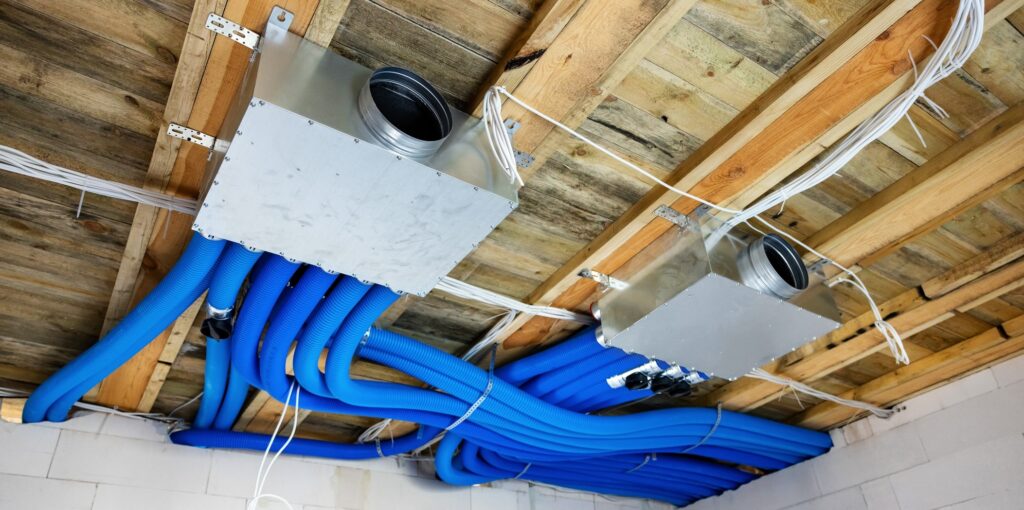Heat recovery ventilators have become an important part of maintaining a healthy, energy-efficient, and comfortable home. Here we will discuss what you need to know about how heat recovery ventilators work, and why they might be necessary for your house.

The Need for Ventilation
Without ventilation in a tightly-sealed home, harmful air particles could be trapped inside the home with you and your family in the air you breathe – everything from dust and pet dander to more dangerous compounds like formaldehyde and radon. Ventilation helps to remove these particles, as well as help control moisture that can lead to mold growth. The American Society of Heating, Refrigeration, and Air Conditioning Engineers (ASHRAE) recommends that a home receives not less than 15 cubic feet of air per minute (cfm) per person. This is to keep a steady supply of fresh breathing air available to the inhabitants of a home to maintain acceptable indoor air quality. Historically, the leaks and gaps in older home construction allowed for air to move freely in and out of living spaces, which provided the necessary air changes per hour. This is called natural ventilation. Unfortunately, these older leaky homes also struggle to maintain stable indoor temperatures, meaning inefficient and higher heating and cooling energy costs. However, as building materials like windows, doors, insulation, and vapor barriers have made homes tighter and “thermally efficient,” a tight home may require mechanical ventilation to reach the correct amount of air changes per hour. There are several types of ventilation: natural, spot or localized, and whole-home ventilation. When considering whole-home ventilation, there are four mechanical methods: exhaust (forcing air out), supply (forcing air in), balanced (provides both exhaust and supply without pressurization) and energy recovery or heat recovery systems.
How a Heat Recovery Ventilator Works
A heat recovery ventilator, also known as an HRV unit, combines the need for a supply of fresh air with the demand for energy-saving heat during the colder months. These mechanical ventilation systems exchange the warm, stale air inside your home with fresh outdoor air — but during this process, an HRV uses (or recovers) the heat from your indoor air. The heat that is already in your home is transferred to the incoming fresh air through what is called a heat exchanger, recycling the existing heat, and reducing the load on your heating equipment.Energy Recovery Ventilators
A similar type of mechanical ventilation system is an energy recovery ventilator (ERV). These systems operate almost identically to an HRV but also transfers a certain amount of water vapor along with heat energy. This works particularly well for homes in humid climates as the transfer of the water vapor helps to stabilize humidity levels in the house. ERVs are most cost effective in areas with extreme winters and summers and most can recover between 70-80% of the energy from the exiting air.Financing Your Heat Recovery Ventilator
Verified HRVs and ERVs are eligible for 100% upfront financing through the Property Assessed Clean Energy Program (PACE). With Renew Financial and PACE, homeowners can finance their investment in renewable energy and get peace of mind with these key features:- Fast approvals, generally within minutes
- No min. FICO score required to qualify
- Fixed competitive interest rates


